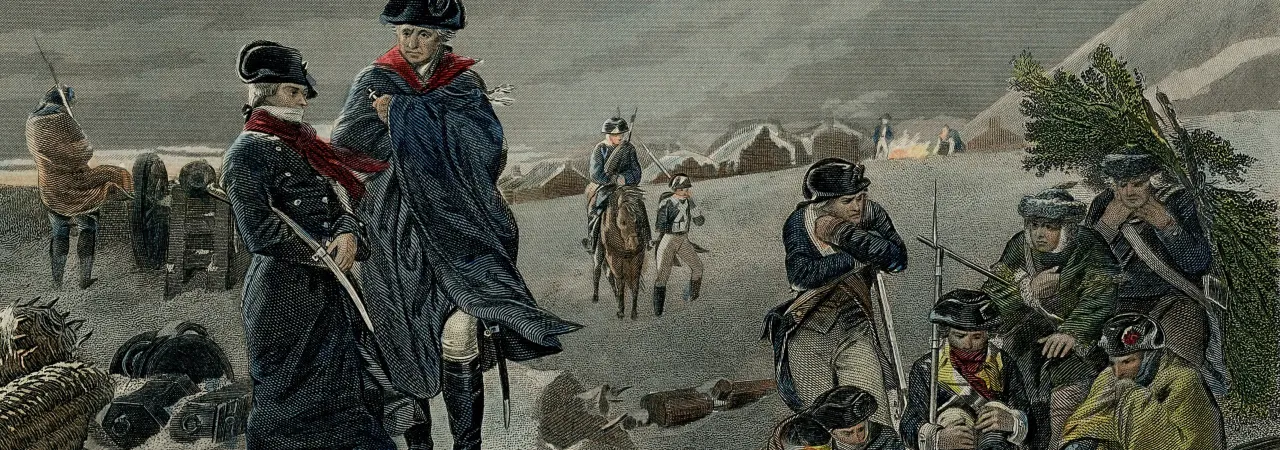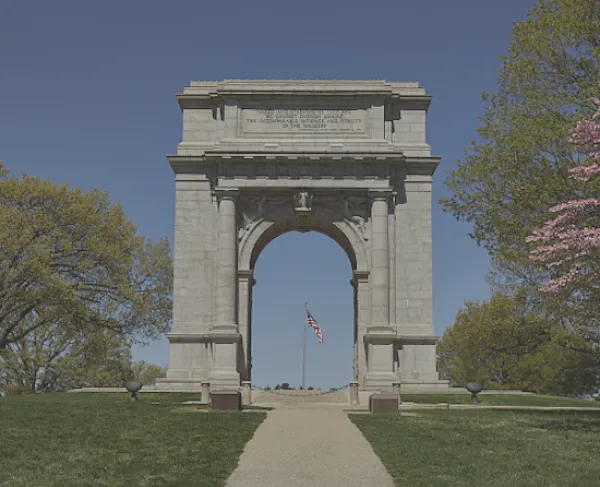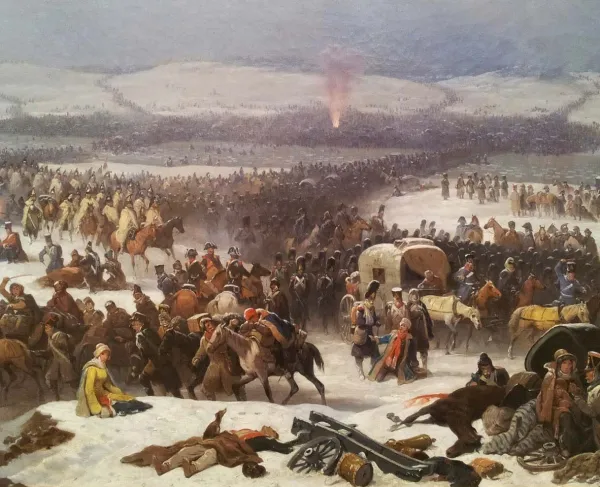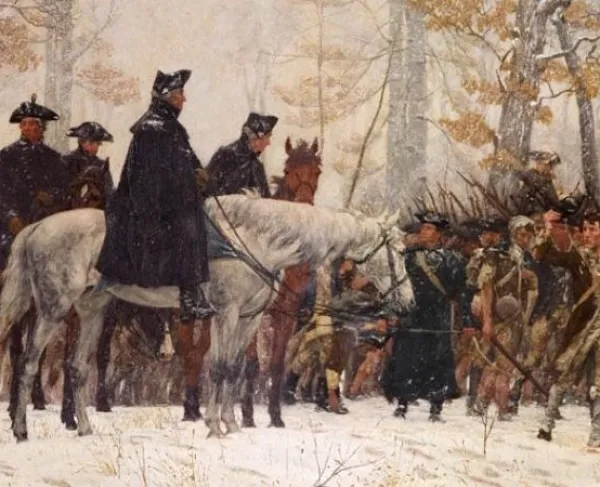
In December, 1777, General George Washington moved the Continental Army to their winter quarters at Valley Forge. Though Revolutionary forces had secured a pivotal victory at Saratoga in September and October, Washington’s army suffered defeats at Brandywine, Paoli, and Germantown, Pennsylvania. The rebel capital, Philadelphia, fell into British hands. By the time the army marched into Valley Forge on December 19, they were suffering not only from cold, hunger, and fatigue, but from low morale in the wake of the disastrous Philadelphia Campaign.
Washington described Valley Forge as "a dreary kind of place and uncomfortably provided." Only 20 miles from British-occupied Philadelphia, in eastern Pennsylvania, Valley Forge presented a strategic location that allowed Washington's army to stay close to the city while maintaining a defensible position that offered access to clean water and firewood. However, in spite of these advantages, Washington's army was ill-prepared for the encampment that would last six months. The army’s supply of basic necessities, like food and clothing, ran perpetually short; coupled with the wintertime cold, and the diseases that ran rampant through the camp, this lack of provisions created the infamously miserable conditions at Valley Forge.
The army camped at Valley Forge consisted of as many as 12,000 Continentals, as well as smaller numbers of African American and Native American soldiers. A number of women and children, including officers' wives, were also present at Valley Forge, having joined their husbands or family members in the encampment. While wintering in the camp, soldiers worked together to build huts for shelter, but unsanitary conditions, and shortages of food and blankets contributed to the disease and exhaustion which continually plagued the camp. The lack of clothing alone, including shoes, socks, and coats left as many as 3,000 of Washington's troops unfit for service, creating the image of starving, wearied soldiers leaving bloodied footprints in the snow and ice. A Continental Army Private, Joseph Plumb Martin wrote that the army's new winter quarters left them "in a truly forlorn condition,—no clothing, no provisions, and as disheartened as need be."
Though Washington pleaded with the Continental Congress and state governors to obtain food and supplies for his suffering army, starvation, and such dieses as typhus and smallpox, and a lack of protection from the elements caused the death of more than 2,000 soldiers. Washington eventually resorted to sending men, led by Nathanael Greene, on foraging missions to procure what provisions could be found in the surrounding countryside. Beyond vying with Congress for the supplies his army desperately needed, Washington had also to contend with threats to his authority that came from ordeals like the Conway Cabal and rivalries between military leaders. Washington's steady leadership was crucial to keeping the army intact through the logistical and administrative hardships of the winter of 1777-1778, and it likely accounted for the fact that there was a never a mass desertion or mutiny at Valley Forge.
Despite brutal conditions, Valley Forge marked a milestone in the army's military experience. In February, 1778, Baron Friedrich von Steuben arrived at Valley Forge, where Washington appointed him unofficial Inspector General of the camp shortly thereafter. Baron von Steuben worked to bring uniformity to the continental soldiers, who had seen combat, but lacked the martial training to pose an effective threat to the British. He developed a system of drill for the entire army and taught the men combat maneuvers that equipped them to rival the well-trained British regulars. Steuben’s previous experience in the Prussian army during the Seven Years' War prepared him to oversee the military training Washington’s men so desperately needed, and by the end of the encampment at Valley Forge, the army had undergone a significant transformation, from ragtag and wearied recruits to an ordered and disciplined fighting force.
The Marquis de Lafayette, a French officer, who provided another noteworthy addition to Washington’s staff at Valley Forge. Lafayette arrived at the camp with the army in December, 1777. Like Steuben, Lafayette engaged directly with his soldiers and became well known for enduring the same hardships as his men while working to ensure they were provided with as many resources as possible. Esteemed for his bravery, Lafayette became popular among the Continentals and well known for his dedication both to General Washington and the American cause.
News of a French alliance with the Americans came in May, 1778, a few weeks before the army’s departure from camp in June of the same year. Revitalized, reorganized, and uniformly trained, the army would forge ahead and display their newfound professionalism and discipline at the Battle of Monmouth in June, 1778. Valley Forge was significant not only for the reshaping Washington’s army, but for the dedication, endurance, and resilience demonstrated by the Americans in their cause for Independence.





